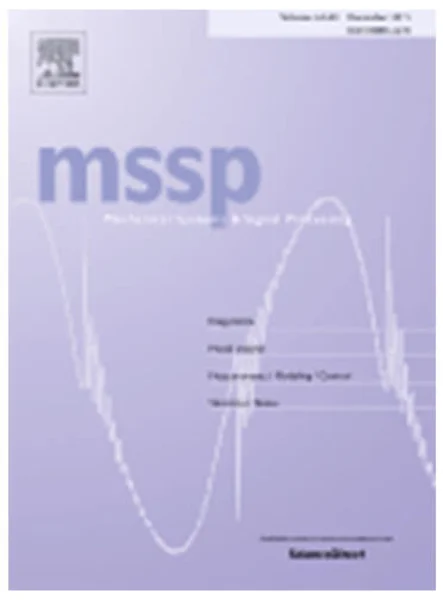-
structural damage alarming using auto-associative neural network technique: exploration of environment-tolerant capacity and setup of alarming threshold
جزئیات بیشتر مقاله- تاریخ ارائه: 1390/01/01
- تاریخ انتشار در تی پی بین: 1390/01/01
- تعداد بازدید: 458
- تعداد پرسش و پاسخ ها: 0
- شماره تماس دبیرخانه رویداد: -
with the intention of avoiding false-positive and false-negative alarms in structural damage alarming using the auto-associative neural network (aann) technique, two issues pertaining to this technique are addressed in this study. the first issue explored is the environment-tolerant capacity of the aann. efforts have been made to seek a generalization technique to enhance the environment-tolerant capacity. first, a baseline aann model is formulated using the conventional training algorithm. generalization techniques including aic and fpe, early stopping, and bayesian regularization are then investigated, resulting in three new aann models. their environment-tolerant capacity is evaluated as per their capability to avoid false-positive and false-negative alarms. the other issue addressed is the setup of alarming threshold, with intent to reduce the uncertainty in aann-based structural damage alarming. a procedure based on the probability analysis of the novelty index is proposed for this purpose. first, the novelty index characterizing the intact structure is analyzed by the kolmogorov–smirnov goodness-of-fit test to obtain its best-fit continuous probability distribution. a confidence interval is then defined in consideration of the compromise between type i and type ii errors. the alarming threshold of the novelty index is consequently set at the upper limit of the confidence interval. the above explorations are examined by using the long-term monitoring data on modal properties of the cable-stayed ting kau bridge. the capability to eliminate false-positive alarm is verified by using unseen testing data which were not used in formulating the aann models, while the capability to alleviate false-negative alarm is examined by using simulated data from the ‘damaged’ bridge with the help of a precise finite element model. the study indicates that the early stopping technique performs best in improving the environment-tolerant capacity of the aann, and the alarming threshold set by the proposed procedure helps to reduce the uncertainty in aann-based structural damage alarming.
مقالات جدیدترین رویدادها
-
استفاده از تحلیل اهمیت-عملکرد در ارائه الگوی مدیریت خلاقیت سازمانی و ارائه راهکار جهت بهبود
-
بررسی تاثیر ارزش وجوه نقد مازاد بر ساختار سرمایه شرکت های پذیرفته شده در بورس اوراق بهادار تهران
-
بررسی تأثیر سطح افشای ریسک بر قرارداد بدهی شرکت های پذیرفته شده در بورس اوراق بهادار تهران
-
بررسی تأثیر رتبه بندی اعتباری مبتنی بر مدل امتیاز بازار نوظهور بر نقد شوندگی سهام با تأکید بر خصوصی سازی شرکت ها
-
تأثیر آمیخته بازاریابی پوشاک ایرانی بر تصویر ذهنی مشتری پوشاک ایرانی (هاکوپیان)
-
فروانی نسبی سندرم روده تحریک پذیر و ریفلاکس معده به مری در دانشجویان ورودی سال 80 دانشگاه تهران
-
مقایسه تاثیرات بوم شناسی در مدل های طراحی محیط انسان ساخت
-
بررسی ساختاری و ریزساختاری گسل فعال کره بس
-
بررسی عملکرد محور هیپوفیز تیروئید و متابولیسم کلسیم و فسفر در مبتلایان به تالاسمی ماژور استان هرمزگان
-
estimating fundamental periods of steel plate shear walls
مقالات جدیدترین ژورنال ها
-
مدیریت و بررسی افسردگی دانش آموزان دختر مقطع متوسطه دوم در دروان کرونا در شهرستان دزفول
-
مدیریت و بررسی خرد سیاسی در اندیشه ی فردوسی در ادب ایران
-
واکاوی و مدیریت توصیفی قلمدان(جاکلیدی)ضریح در موزه آستان قدس رضوی
-
بررسی تاثیر خلاقیت، دانش و انگیزه کارکنان بر پیشنهادات نوآورانه کارکنان ( مورد مطالعه: هتل های 3 و 4 ستاره استان کرمان)
-
بررسی تاثیر کیفیت سیستم های اطلاعاتی بر تصمیم گیری موفق در شرکتهای تولیدی استان اصفهان (مورد مطالعه: مدیران شرکتهای تولیدی استان اصفهان)
-
اولویت بندی شاخص های کیفیت محیطی از دید گردشگران با استفاده از مدل های (saw , vikor ,electre و کپلند)
-
تحلیل و ارزیابی کیفیت خدمات شهری در مناطق شهری کلان شهر اهواز
-
تحلیل حقوقی خشونت علیه زنان با توجه به حقوق بین الملل بشر
-
heritage preservation as strategy for recomposing conflict territories
-
evaluation and analysis of drought on the quantity and quality water resources in lorestan province (case study of khorram river)




سوال خود را در مورد این مقاله مطرح نمایید :